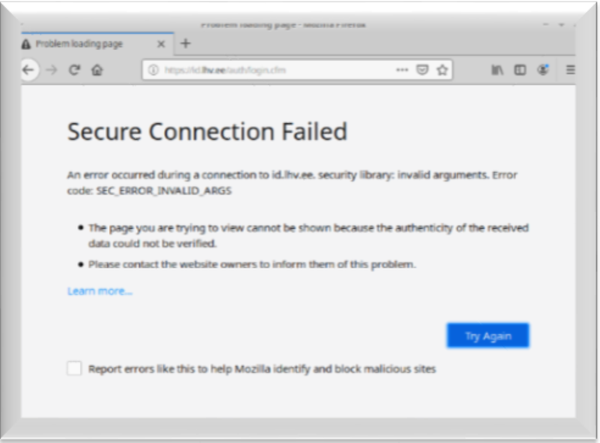Cyber security for small business: Keeping your small business safe
Small businesses can take proactive steps to harden their defenses and mitigate the risks. This article is just the beginning of your journey to cybersecurity awareness and practical solutions.

INTRODUCTION
In the current interdependent world, SMEs are trapped between vulnerability and opportunity. Technology advances business growth, but it also exposes businesses to cyber-attacks that can potentially bury their enterprise completely. The landscape of cyber security threats is constantly changing because fraudsters are continually coming up with new and more sophisticated methods. Even though it’s easy to think large companies are the primary victims, hackers attack 43% more small firms. For small businesses, it’s necessary to be informed about new threats so that they can adjust their security measures in time. Market monitoring and regular participation in cyber security conferences may provide valuable intelligence on new threats and countermeasures. To prevent your efforts from being wasted in a digital storm, this article will outline the basics of cyber security tailored to small businesses.
Understanding the common threats and vulnerabilities
Despite what small businesses think, they are not recognizable enough to attract cyber-criminals, but the truth is quite the opposite. This is because, as they consider small organizations softer targets with potentially weak defenses, cyber-criminals often attack them. The threats include ransomware, and spear phishing among others, and are constantly changing. It is important to understand your adversary before developing defenses. Here are a few typical cyber threats that small firms must deal with:
· Malware: malware uses data theft, system performance disruption, and systems control. Some of the malicious software are viruses, ransomware, and spyware.
· Phishing: Fraudulent emails and visits to contrived websites can trick people into disclosing their private information.
· Data breaches: Cyber-criminals make use of weaknesses to obtain personal client information, bank records, or trade secrets.
· Attacks known as denial-of-service (DoS): DoS is the art of flooding your network or website with traffic to cripple one’s online presence.
· Human error: Staff member actions such as using weak passwords or allowing phishing attacks turned out to be a costly weakness – an unfortunate occurrence.
Essential cyber security practices
1. Protect your, information:
· Encryption: To ensure that no unauthorized parties can access your sensitive information, encrypt the data in transit and at rest.
· Backups: To ensure a safe recovery in case of an attack or system failure, regularly back up your data to some other reliable remote location. Make sure all software systems are updated. Regular updates often include security patches that address vulnerabilities.
· Access control: Apply MFA and implement a stringent password policy to limit access to sensitive data only by authorized users. However, weak passwords are frequently used by cyber-criminals as points of access.
2. Safeguard your network:
· Firewalls can be installed and configured to filter appropriate traffic in both directions as well as blocking suspicious activities.
· Keep your antivirus software and anti-malware up to date with the latest virus definitions to be protected from varying threats.
· Wi-Fi security: WPA2 encrypts your network and avoids sensible activity on open Wi-Fi.
3. Empower your employees:
· Cyber security awareness training: Instruct your personnel on how to detect and avoid online threats, like social engineering as well as phishing traps. With regular training sessions, your team can be empowered to act as the first line of defense.
· Employee Responsibilities and Vigilance: The workforce is an important element of a cyber-security defense strategy. It is important to establish a culture of constant monitoring beyond the initial commands. To ensure team members' accountability, encourage a spirit that requires them to question suspicious communication or strange requests.
Make sure you remind them that managing cyber security is not only the IT department’s concern.
4. Data security and legal compliance:
Data security is a legal requirement that small businesses must follow. However, the handling of client information can be governed by different regulations depending on your sector and location. Ensure that regulations such as HIPAA, GDPR, and local data protection requirements are observed. Apart from making businesses prone to legal actions, noncompliance undermines consumer trust.
5. Setting aside money for cyber security:
Understandably, small companies often have a lack of capital; however, spending on cyber security is an investment in future survival. In other words, it serves as financial protection in case of loss due to system penetration or data breach. Allocate cyber security budgetary provisions as a priority to ensure that we always remain safe and resilient amid the changing threats.
Make prudent investments in cyber security solutions:
· Software for viruses and malware protection: Buy trustworthy anti-virus and anti-malware software to identify such viruses, before they cause any damage.
· Back up your data: As long as you have your regular backups of important data secure. It is essential in the case of a ransomware attack.
· Endpoint protection: Spend your money on good security solutions to protect individual devices. As more companies provide flexible work arrangements, this is critical.
· Cloud security: Since you intend to use cloud services, choose service providers with strong security mechanisms. Encrypt critical data before transferring it to the cloud.
6. Developing a culture of cyber security:
· Communication is essential:
Promote open discussions on cybersecurity issues within your firm. Ensure that staff members report any suspicious actions immediately.
· Plan for incident response:
Design a comprehensive plan that outlines what steps need to be taken in the case of a security violation. The timely action to minimize the damage.
· Frequent assessments and audits:
Schedule cyber security audits to assess the performance of your security procedures. Find potential threats as well as quick fixes for them.
· Third-party vendors:
Promote their strict adherence to cyber security standards when operating with third-party partners or suppliers. In case of weak linkages, the security of your company may be compromised.
· Seek out expert assistance:
Speak with professionals in cyber security: Instead, take into account cooperation with IT security specialists who will identify the vulnerabilities and what solutions should be implemented to ensure continuous assistance.
· Consider cyber security insurance to mitigate your losses caused by an attack.
7. Cooperation and sharing of information:
These two pillars sustain the cybersecurity community. For instance, some specialized cybersecurity forums hosted within an industry where best practices and experiences are shared can be beneficial to small firms. Even if they are not necessarily opportunities that exist in the actual business environment, gathering important ideas from other people’s cybersecurity policies can help yours.
8. Managing the difficulties of remote work:
However, the security perimeter has also increased with remote work becoming more common and it is critical to adjust cybersecurity strategies accordingly. In contemporary cybersecurity, such measures as securing communication channels and setting secure remote access protocols are the key issues to be addressed.
9. Constant improvement and adaptation:
It takes time and effort to obtain cybersecurity improvement. It is a constant process. Evaluate your cyber security posture periodically according to the changes in activities, technologies, and outside threats. By being proactive, you know that your chosen security solutions will continue to be relevant despite changing threats.
Advanced Cyber Security Protection Strategies for Your Business
As your company expands and the value of your data increases, think about putting these cutting-edge cyber security safeguards in place:
· SIEM, or security information and event management, provides real-time state monitoring of network-wide incidents and analysis.
· Vulnerability management: Continuously Finds and Patches Software Defectors in Systems.
· Data loss prevention (DLP): Controls data transfer to prevent sensitive information from leaking or being accessed by people without authorization.
The Takeaway:
Investing in cybersecurity is not a cost, the lesson to be learned from this class.
While this requires labor and capital, investing in greater cyber security is not a cost but an investment in your company’s future. You can:
o Proactively protect your systems and data.
o To make clients trust in you, prove to them that your cyber security processes are strong enough. This will foster client loyalty and trust.
o Steer clear of expensive remediation: Preventing cyber-attacks is cheaper than reacting to one.
o Safeguard your reputation: It can take anywhere from months to years before your brand recovers after a cyber-attack.
CONCLUSION
Keep in mind that awareness is your weapon and vigilance is your shield in the digital war zone. With these standards, adopting cybersecurity as a priority will allow you to safely navigate the Internet and create your impenetrable business.
Thanks for reading.
If you like the article, consider sharing and subscribing. ;)





